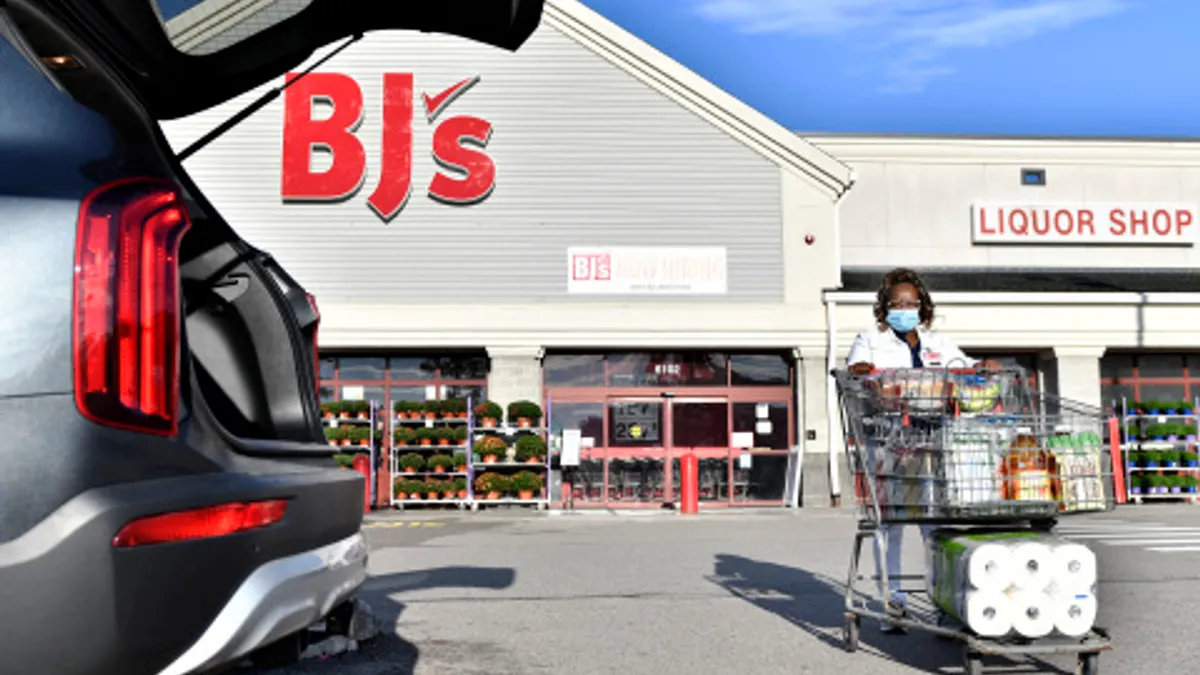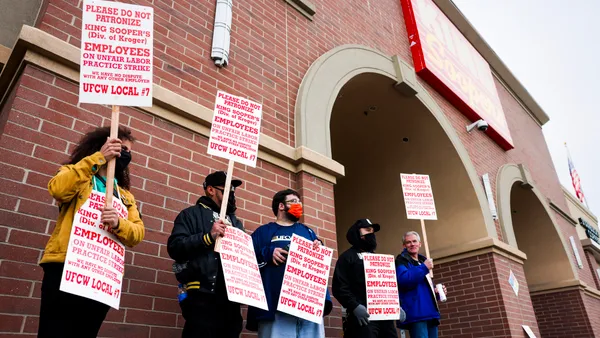Dive Brief:
- BJ’s Wholesale Club reported third-quarter earnings that topped Wall Street estimates as shoppers continue to rely on club stores and other big box retailers amid record inflation and supply chain squeezes.
- Grocery led sales for the company in the quarter, with comparable sales in the department up 6% over last year’s Q3 and up 25% on a two-year basis. Membership fee income rose 7.7%, boosting gross profit even as merchandise margins slipped.
- BJ’s also announced it will offer delivery via DoorDash beginning early next year to complement its current service with Instacart.
Dive Insight:
BJ’s latest earnings underscore the enduring strength of club stores right now as consumer trends continue to favor stock-up shopping and the value image these retailers project.
Like other retailers, BJ’s has felt the impact from the triple threat of supply chain shortages, record-high inflation and a tight labor supply. Although gross profit increased nearly $50 million in Q3, to $791.2 million, its merchandise gross margin rate fell 20 basis points due to higher freight costs and price investments.
CEO Robert Eddy said during an earnings call Thursday the company is looking for alternative suppliers and trying to keep prices stable in core categories like meat, produce and beverages while raising them elsewhere. He noted that BJ’s made its largest-ever investment in starting wages at the beginning of Q3, with average hourly pay now above $15, and that this has bolstered the company’s ranks of workers ahead of the holiday season.
With its DoorDash partnership, BJ’s is ushering in a new operational model that closely follows what other retailers have implemented in recent months. BJ’s will list its products on DoorDash’s marketplace, as it currently does with Instacart. In addition, the company will use DoorDash and other “transportation partners” as last-mile couriers for orders made through BJ's e-commerce platform.
Eddy said BJ’s workers will pick and pack orders made through BJs.com, which promises faster and more accurate fulfillment since employees are more familiar with their stores than gig workers. BJ’s digital sales rose 44% in Q3 as consumers continue to rely on pickup and delivery services.
“Our members’ experience will be better as our team members pick with greater quality and care, driving better accuracy,” he said during the earnings call. “More competition also lowers prices on marketplaces. Further, by having more than one partner we can dynamically route deliveries based on a number of variables such as service level, speed, member ratings, cost and so on.”
Club store competitors Costco and Sam’s Club have also boasted strong sales gains recently. Sam’s Club’s comparable store sales excluding fuel rose nearly 14% in Q3, while Costco posted an 11.7% increase in the key metric in the U.S. for the month of October.
BJ’s continues to boost its assortment of private label products while also pruning its selections in the center store — an initiative begun under previous CEO Lee Delaney, who passed away suddenly earlier this year. Eddy said that the simplification process is making BJ’s a more compelling place to shop while also boosting operational efficiency.
“We don't need to carry multiple brands worth of trash bags or deodorant or laundry soap or whatever," Eddy said. "We have, in many cases, 10 times the assortment of some of our wholesale club competitors and that's really not helping the member understand the value very well. It's not helping our operators deal with our inventory efficiently and run our business efficiently."













